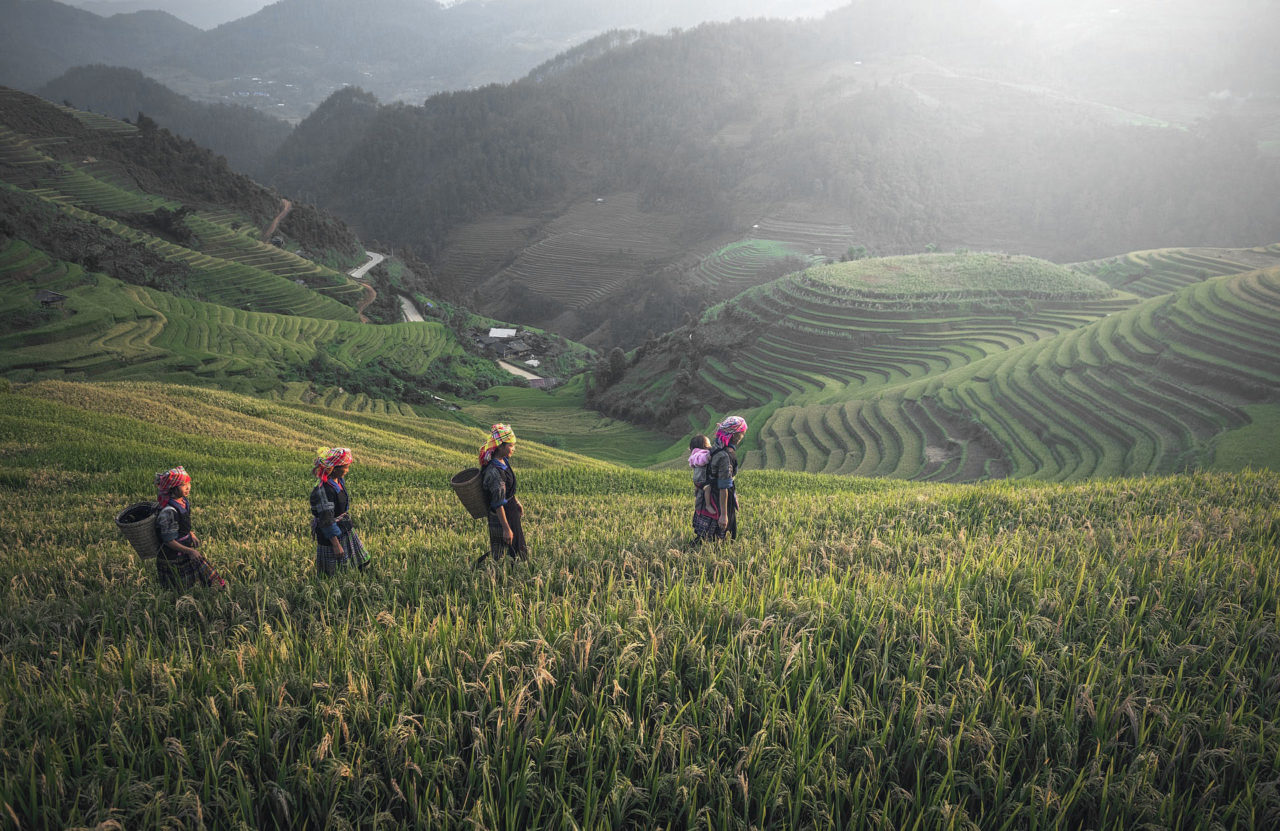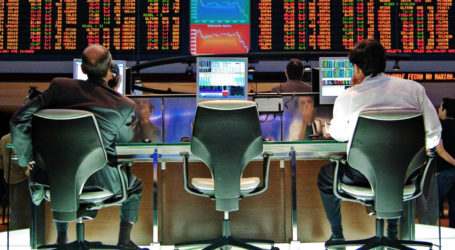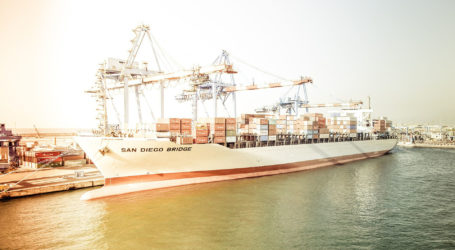Farmers fall prey to rice rustlers as price of staple crop rockets
Knee-deep in muddy water, her face smeared with sandalwood paste and a broad-brimmed hat for protection against the broiling sun, Samniang Ketia grins broadly at her good fortune to be in the rice growing business as she replants shoots for the next harvest two months off.
The 37-year-old, who leases a small plot of land in Samblong, central Thailand, knows the price of rice has rocketed – in some cases nearly doubling in three months – and that she is about to reap the benefit when she sells what her family does not eat.
But the price rises have a downside and spawned a new phenomenon: rice rustling. One night, one of Samniang’s neighbour’s fields was stripped as it was about to be harvested. Local police have now banned harvesting machines from the roads at night while on the northern plains farmers are camping in their fields, shotguns at the ready.
“I’ve never heard of it happening before, that people have stolen rice,” said Lung Choop, 68, who grows rice on his smallholding. “But it’s happening now because rice is so expensive. I guess I’ll have to guard my own distant fields when they’re ready.”
Across Asia the suddenly stratospheric rice prices have prompted countries to ban exports amid fears that shortages could provoke food riots.
While prices of wheat, corn and other agricultural commodities have surged since the end of 2006, partly because of extra demand for biofuels to offset rising oil prices, rice held fairly steady.
However, prices for the staple food of about 2.5 billion Asian people rocketed two months ago. Thai rice, the global benchmark, which was quoted at just below $400 (£200) a tonne in January rose to $760 (£380) last week.
Aware that shortages of such a vital staple could spell trouble at home, Asian governments have moved to ensure their people get enough to eat at a price they could afford, an insurance policy which has in turn raised prices further.
Late last week, Cambodia banned all exports for two months to ensure “food security”, following the lead of Egypt, a major exporter. Vietnam, which ships 5m tonnes abroad each year, on Friday declared a 20% cut in exports.
India started the ball rolling late last year. With dwindling stocks, the large exporter introduced curbs that effectively banned exports, around 4m tonnes. Pakistan and China also introduced curbs.
Hopes that India would re-enter the market within the next few months were dashed on Thursday when it raised the minimum price for exports from $650 a tonne to $1,000, effectively maintaining the ban, which was escaped only by the foreign currency-earning premium basmati.
The Philippines is potentially among the biggest losers – with 91 million people, it cannot feed itself. After its farmers warned of a looming shortfall Manila’s fast-food outlets offered to serve “half portions” of rice to conserve stocks. The Philippines’ president, Gloria Macapagal Arroyo, has also pleaded with Vietnam to guarantee 1.5m tonnes of rice this year.
While Indonesians took to the streets of the capital, Jakarta, in protest at rising prices even Thailand, the world’s largest exporter, is bracing itself.
The country produces 30m tonnes of rice a year, and aims to export 8.5m tonnes. Last year 9.5m tonnes was sold abroad and more may be exported this year, prompting ministers to consider curbs. “A rice shortage in the local market is very likely,” said Prasert Kosalwit, director general of the Thai government’s rice department.
Rice shortfalls were reported in southern Thailand as traders from the northern rice belt bought up stocks at inflated prices.
With global rice stocks at their lowest level since 1976, analysts expect price rises to continue until the end of next year. Some analysts predict it could hit $1,000 (£500) a tonne before farmers, spurred by the high prices, plant more crops and increase supplies.
Demand outstripped supply by nearly 2m tonnes last year. The predicted shortfall this year is more than 3m tonnes on the 424m tonnes required.
Across Asia, with its vast and growing population, there is little if any extra land to bring into production, and it may take several years for any “supply response” to materialise.
Growing urbanisation over the longer term in countries such as China and India is cited as a key factor in the shortfall, where the increasingly affluent middle classes demand more meat and dairy products, with land turned over to growing feed for livestock.
Rising wealth in Africa has also become a factor. Oil-rich Nigeria is now the largest importer in Africa, a continent which takes the lion’s share of Thai exports, about 40%. Asia soaks up 35%.
Severe weather across Asia has also damaged production. Record icy temperatures were recorded in China and Vietnam, the latter of which also suffered a pest outbreak. Bangladesh endured a devastating cyclone while Australia suffered a prolonged drought.
“It’s been described as a ‘perfect storm’ of factors that have pushed prices to their highest levels since the 1970s,” said Adam Barclay, of the International Rice Research Institute.
The World Food Programme is also alarmed. The extra cost of feeding the 28 million “poorest of the poor” spread across 14 Asian countries will cost $160m a year and it has asked three dozen donor governments for the cash, part of a $500m global appeal to offset rising food prices.
“The real danger with rising rice prices is that the ‘working poor’ will simply be pushed into the category of ‘poor’ who will look to us to feed them,” said Paul Risley, spokesman for WFP Asia. “There are hundreds of millions living at, or just below, the poverty line of $1-a-day, spending 70% of their day-labour wages on food.










